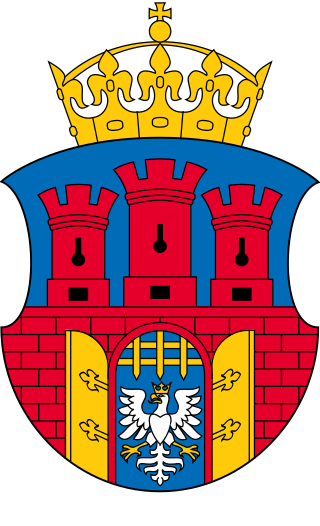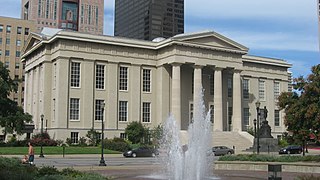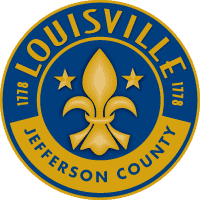
The national flag of France is a tricolour featuring three vertical bands coloured blue, white, and red. The design was adopted after the French Revolution, whose revolutionaries were influenced by the horizontally striped red-white-blue flag of the Netherlands. While not the first tricolour, it became one of the most influential flags in history. The tricolour scheme was later adopted by many other nations in Europe and elsewhere, and, according to the Encyclopædia Britannica has historically stood "in symbolic opposition to the autocratic and clericalist royal standards of the past".

The fleur-de-lis, also spelled fleur-de-lys, is a common heraldic charge in the shape of a lily. Most notably, the fleur-de-lis is depicted on the traditional coat of arms of France that was used from the High Middle Ages until the French Revolution in 1792, and then again in brief periods in the 19th century. This design still represents France and the House of Bourbon in the form of marshalling in the arms of Spain, Quebec, and Canada — for example.

The National Flag of Canada, often referred to simply as the Canadian flag, consists of a red field with a white square at its centre in the ratio of 1∶2∶1, in which is featured one stylized, red, 11-pointed maple leaf charged in the centre. It is the first flag to have been adopted by both houses of Parliament and officially proclaimed by the Canadian monarch as the country's official national flag. The flag has become the predominant and most recognizable national symbol of Canada.

The flag of Quebec, called the Fleurdelisé in French, represents the Canadian province of Quebec. It consists of a white cross on a blue background, with four white fleurs-de-lis.

The coat of arms of Quebec was adopted by order-in-council of the Government of Quebec on 9 December 1939, replacing the arms assigned by royal warrant of Queen Victoria on 26 May 1868.

The Illinois Country, also referred to as Upper Louisiana, was a vast region of New France claimed in the 1600s that later fell under Spanish and British control before becoming what is now part of the Midwestern United States. While the area claimed included the entire Upper Mississippi River watershed, French colonial settlement was concentrated along the Mississippi and Illinois Rivers in what is now the U.S. states of Illinois and Missouri, with outposts on the Wabash River in Indiana. Explored in 1673 from Green Bay to the Arkansas River by the Canadien expedition of Louis Jolliet and Jacques Marquette, the area was claimed by France. It was settled primarily from the Pays d'en Haut in the context of the fur trade, and in the establishment of missions from Canada by French Catholic religious orders. Over time, the fur trade took some French to the far reaches of the Rocky Mountains, especially along the branches of the broad Missouri River valley. The "Illinois" in the territory's name is a reference to the Illinois Confederation, a group of related Algonquian native peoples.

The city of Kraków uses a coat of arms, a seal, official colors, a flag, and a banner as its official symbols. Additionally, a number of semi-official and unofficial symbols of the city are also used.

The history of Louisville, Kentucky spans nearly two-and-a-half centuries since its founding in the late 18th century. The geology of the Ohio River, with but a single series of rapids midway in its length from the confluence of the Monongahela and Allegheny rivers to its union with the Mississippi, made it inevitable that a town would grow on the site. The town of Louisville, Kentucky was chartered there in 1780. From its early days on the frontier, it quickly grew to be a major trading and distribution center in the mid-19th century and an important industrial city in the early 20th. The city declined in the mid-20th century, but by the late 20th, it was revitalized as a culturally-focused mid-sized American city.
The Fleur de Lis Stakes is a Grade III American Thoroughbred horse race for fillies and mares age three and older over a distance of 1+1⁄8 miles on the dirt run annually in late-June or early-July at Churchill Downs in Louisville, Kentucky.
Kentucky Country Day (KCD) is an independent co-educational college preparatory day school for junior kindergarten through 12th grade located in Louisville, Kentucky. It is located in northeastern Jefferson County on a large suburban campus.

The flag of St. Louis, Missouri consists of a solid red background and three thick, wavy lines colored blue and white extending from the top left corner, bottom left corner, and center right edge. At the intersection of these lines there is a yellow disk containing a blue fleur-de-lis.

The government of Louisville, Kentucky, headquartered at Louisville City Hall in Downtown Louisville, is organized under Chapter 67C of the Kentucky Revised Statutes as a First-Class city in the state of Kentucky. Created after the merger of the governments of Louisville, Kentucky and Jefferson County, Kentucky, the city/county government is organized under a mayor-council system. The Mayor is elected to four-year terms and is responsible for the administration of city government. The Louisville Metro Council is a unicameral body consisting of 26 members, each elected from a geographic district, normally for four-year terms. The Mayor is limited to a two consecutive term limit, while members of the Louisville Metro Council are not term limited.

The Louisville Metro Hall is the center of Louisville, Kentucky's government. It currently houses the Mayor's Office and the Jefferson County Clerk's Office for marriage licensing, delinquent tax filings, and the deeds room. The building was placed on the National Register of Historic Places in 1972. Construction began in 1836, and both the City of Louisville and Jefferson County governments starting using it in 1842.

The Seal of Louisville is an emblem used as a visual representation for the city of Louisville, Kentucky. Among other reasons, the seal is used to stamp documents to certify their authenticity. The city had four seals from its formation in 1828 to 2003 before its merger with the Jefferson County, Kentucky government and creating a new joint seal, which was designed during a citywide competition by Louisville native and art director William Glenn Hack.

The following outline is provided as an overview of and topical guide to the United States Commonwealth of Kentucky:

The flag of New Orleans contains a large white field that contains three gold fleurs-de-lis and is bordered on the top by a red stripe and from below by a blue stripe. The presence of the fleur-de-lis, a stylized depiction of a flower and a traditional French symbol demonstrates the city's French heritage and strong ties to France, while the presence of the design being a Spanish fess demonstrates the city's Spanish heritage and strong ties to Spain.

The current flag of Montgomery County, Maryland, was adopted on October 5, 1976. It was designed by the British College of Arms. It is commonly flown outside of the Montgomery County's governmental facilities, such as fire stations.

The flag of Fort Wayne, Indiana was adopted as the city's official flag by City Council on June 26, 1934. The pall design includes two diagonal white stripes converging in the circular center to form a horizontal white stripe. Red silhouettes of a Miami Native American head, a French fleur-de-lis, and a British lion grace a navy blue field. A red blockhouse is located at the center of the converging stripes, with the settlement's founding date and city name.



















